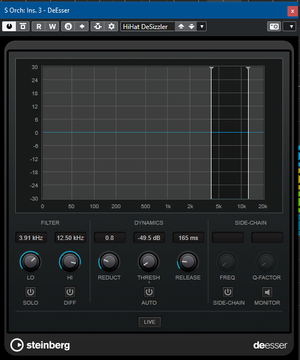José Herring
Lost in Cyberspace
Hello, I just purchased FabFilter Pro Q3 EQ and testing it out. Firstly, ummm...I think it sounds better than any EQ I've ever used. But, was wondering if you could lend me your ears at let me know what you think of this string patch sonically. I'm not one to usually apply EQ to any orchestral instruments but I'm learning.
Just a quick little pad so don't expect Lark Ascending or something.
edit: Updates
Just a quick little pad so don't expect Lark Ascending or something.
edit: Updates
Attachments
Last edited:





